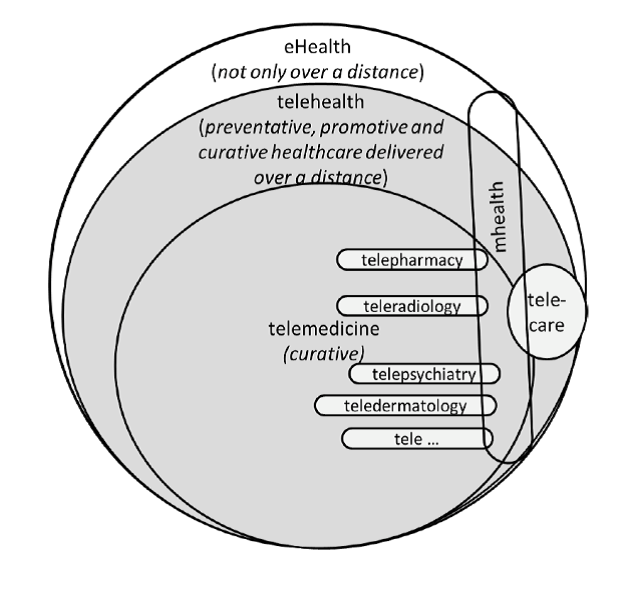An Introduction to Telehealth
What is telehealth? Is it a modality that can be adapted in the cardiology practice? According to the Health Resources Services Administration website, 'telehealth' is defined as the use of electronic information and telecommunication technologies to support and promote long-distance clinical health care, patient and professional health-related education, public health and health administration.
The term telemedicine is more commonly applied when technology is used for patient care. Over the years, more terms have evolved within the telemedicine sphere, including telepharmacy, teleradiology and telecardiology. The figure below demonstrates the different practices of telehealth:

Over the course of the last 70 years, telehealth has continued to evolve and adapt to complement our ever-changing health system. Telehealth is valuable to the health care system as a whole, but specifically can benefit patients in rural communities where access to care is a significant issue. According to the Centers for Disease Control and Prevention, 15 percent of the U.S population lives in rural areas and are more likely to die due to one of the five leading causes of death (heart disease, cancer, unintentional injuries, chronic lower respiratory disease and stroke). Telehealth can play a key role in reducing rural deaths due to preventable illness.
Multiple modalities of telehealth can be used to improve patient quality of care. Home monitoring can be beneficial for patients recently discharged with a variety of diagnosis. Home monitoring has the ability to track daily weights, blood pressures, pulse, and oxygen saturation which can indicate when the patient may have a decline in their condition. A study completed by S. V. Browning, et al., demonstrated that cardiac patients with home monitoring upon discharge were less likely to have subsequent emergency room visits and re-hospitalizations.
Telehealth can also be utilized in radiology. Images can be sent in a store-and-forward mode or viewed real time as the study is being completed. Having this interactive consultation leads to efficient care. This is an extremely valuable tool in rural care as imaging sites may not have an onsite radiologist or other specialist to interpret the study. Health care providers can have results in hand to discuss with the patient which assists in creating a plan of care. Teleradiology yields a high patient and provider satisfaction rate.
The possibilities of the integration of telehealth into patient care are limitless. The future of telehealth is widely anticipated among the health care community and will be impacting the quality of care and access to care of patients across the continuum.
This article was authored by the CV Team Section Communications Work Group, as the first in a series covering telemedicine and telehealth.
